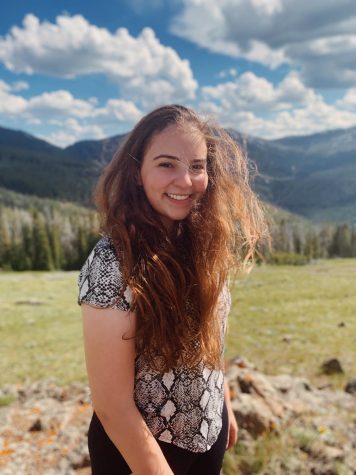AP Studio Art Students Embrace Virtual Learning
Photo Credit: Sophia Mullin
“[The artwork above] was a lowball easy piece to start off the year. I still learned a lot about digital art and different techniques though,” Sophia Mullin, a Boise High Senior taking AP Studio Art this year, shared, “My theme is kinda vague but [it’s] basically people dressed in traditional clothing from various cultures doing modern activities.”
November 20, 2020
The main characteristic of the new virtual learning environment is adaptation. These feelings are shared by both teachers, who have to redevelop their lesson plans and methods of teaching, and students, who must adjust their learning style to accommodate new changes. When thinking of academic adaptation, core subjects are the first to arise. Yet, many other electives have also experienced extreme change but have been left out of the mix.
Students who take AP Studio Art are often those who have a deep commitment to art and share a broad knowledge of materials which enables them to work towards college credit for their art portfolio. The AP Studio Art class combines both AP 2-D Art and Design and AP Drawing into one course.
Their prepared collection of artworks must be submitted at the end of the school year, containing fifteen images that visually respond to a certain idea. Illustration, painting, photography, drawing, computer graphics, and graphic design are all acceptable forms of art for this class, meaning the final portfolio may vary distinctly from student to student.
“It’s a really small class this year, I usually have anywhere from 20 to 30, and this year I had 8,” Katy Shanafelt, Boise High’s AP Art teacher, observed, “I think a lot of kids just knew that it would take a lot because it is a big commitment…I think a lot of kids decided to just not pursue it just because it was extra work in an already difficult year.”
Until recently, students dedicated most of their semester to “searching, planning, and thinking about what they wanted to devote the entire year’s worth of work to.” The initial planning took some time to evolve. “I think it is very stressful. I have a couple students who know exactly what they want to do,” Ms. Shanafelt described, but others had to “mull over options and think for a while. It just takes a longer incubation period for some people, but as soon as you get the spark, you take off.”
As for right now, AP Art students are currently in production. Each student has an individual project they must complete towards their portfolio. Six of the fifteen final artworks must be completed by the end of the semester.
Ms. Shanafelt commented, “I have some students who are very frustrated with the process because they just can’t get where they need to be and my job is to really push them. And so, I push them into production. Sometimes production takes care of the doubt, so if they start creating they are going to be actually moving into a better space and be able to feel better about what they are doing.”
As for completing artworks during online learning, Ms. Shanafelt met with each student individually at school, to pair up each student with the necessary materials to complete their task. “The AP kids are AP because they really care about art and they have a lot of experience and they know what questions to ask, they know what supplies they need. And I just really worked with them individually to get them set up at home,” Ms. Shanafelt said.
Starting production in a virtual learning environment has been difficult for many art students. Ms. Shanafelt adapted her classes to accommodate self care practices and “making sure we are in a good space so we can create.” To overcome feelings of anxiety and worry, Shanafelt is conducting meditation sessions in her art classes in hopes of attracting inspiration and creativity.
The astonishing attribute about AP Art is that students are allowed to pick from a variety of art mediums to work with. “I have half and half doing digital art, because that’s just a really popular way to work right now and it requires less materials,” Ms. Shanafelt disclosed. However, there are still those who have great love for traditional media and want to continue pursuing it. “I have them working on both,” Shanafelt said, “a lot of people have one project working at home that is digital and another in the studio here at school that is actually physical materials. And they like both, which I think that’s great.”
Even during virtual learning, creative electives such as AP Studio Art have continued to thrive under the leadership of their respective teachers, and more than ever, students are finding that by adapting, success is still possible.


![“[The artwork above] was a lowball easy piece to start off the year. I still learned a lot about digital art and different techniques though,” Sophia Mullin, a Boise High Senior taking AP Studio Art this year, shared, “My theme is kinda vague but [it’s] basically people dressed in traditional clothing from various cultures doing modern activities.”](https://boisehighlights.com/wp-content/uploads/2020/11/ApArt-900x772.jpg)
